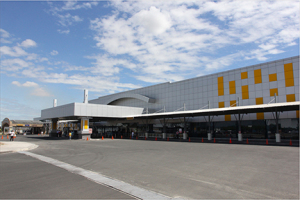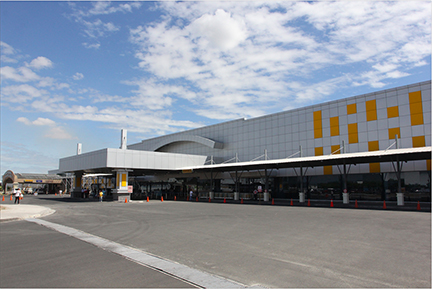
Ninoy Aquino International Airport and Clark International Airport (CRK) should function as a dual airport system while awaiting the opening of the new NAIA, according to the dream plan outlined in the latest report of Japan International Cooperation Agency (JICA) for the transport system of Metro Manila and nearby areas.
“While NAIA’s capacity is already saturated, the functions of two gateway airports of NAIA and Clark should be urgently strengthened and integrated by clarifying their roles and improving access to and between two airports,” JICA said in its latest study entitled “Roadmap for Transport Infrastructure Development for Metro Manila and Its Surrounding Areas (Region III and Region IV-A)”.
“For the next ten years at least, the region (and the country) has to live with a Twin Gateway Airport System,” stated JICA, which sees NAIA and CRK functioning concurrently and splitting air traffic volumes.
For short-term projects that can be completed before 2016, JICA suggested that the government implement committed improvement packages for NAIA and CRK, while utilizing a runway at Sangley Point in Cavite.
But for the medium- and long-term action agenda, a “new NAIA” must be constructed to replace the existing main gateway, the study said.
For this, JICA proposed the conduct of a study, which could cost P50 million, on building a new NAIA within a short 50-kilometer radius, such as Sangley.
As an alternative to the new NAIA, JICA also suggested developing CRK as a secondary gateway airport for the central and northern cluster.
Once the new NAIA, envisioned to be an internationally competitive regional airport, opens, the agency proposed that the existing one “be closed and converted for urban development.”
JICA noted that with a vast land area of 2,367 hectares, Clark offers a spacious alternative to the airport capacity shortage in the region.
“Clark must be developed to absorb the overflow air traffic from NAIA, as well as carve out its own market niche—which is the Low Cost Carrier (LCC) traffic in the Asian region,” JICA said.
In its “2011 Greater Capital Region Airport Study,” JICA forecast that Clark can attract about 15 to 20 million passengers per annum (MPPA) in 2020 and 25 to 30 MPPA in 2025.
Aside from constructing an LCC terminal and a new international passenger terminal at Clark, its existing main runway needs to be extended from the current 3,200 meters to approximately 4,000 meters, while the existing secondary runway can be converted into one of the parallel taxiways, JICA suggested.
Clark can’t replace NAIA
However, JICA said Clark is “not a replacement for NAIA” due to its distance from the main market of Metro Manila.
“There is no rapid rail link to compensate for the distance,” the study said, adding that while the North Luzon Expressway offers decent access, travel time through it is unpredictable.
It noted the “unpreparedness of Clark to absorb the overflow, and/or replace NAIA.”
While JICA’s “2011 Airport Greater Capital Region Study” implicitly favored the twin gateway airport solution, “it was unduly biased towards Clark aside from failing to highlight the fact that the country has no choice but to go for dual airports.”
JICA now says in its latest report that “a compelling case can be made against Clark as a replacement to NAIA, but not as a second gateway or as a reliever airport.”
It stated, “Even if a single gateway is chosen, it will still necessitate the simultaneous operations of two airports during a transition period that is likely to occur over 10 years minimum.”
The latest study prepared by Almec Corporation for JICA from March 2013 to March 2014, has been approved by the National Economic and Development Authority Board, chaired by President Benigno Aquino III. It was conducted in coordination with the Department of Transportation and Communications, Department of Public Works and Highways, Metropolitan Manila Development Authority, and other relevant agencies. – Roumina Pablo





